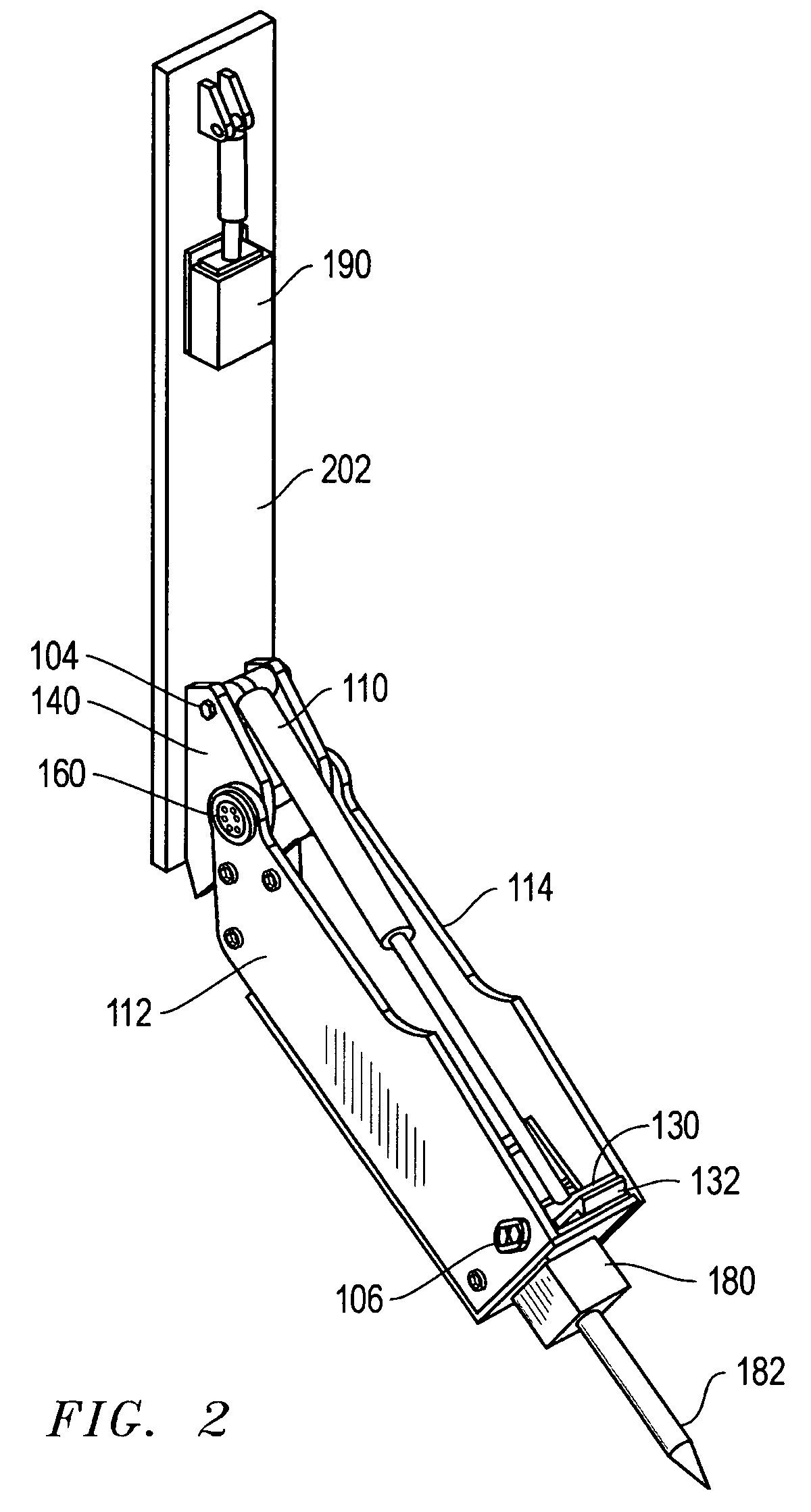Impact resistant breaker deployment system for an excavating machine
a technology of breaker and deployment system, which is applied in the field of impact resistance breaker deployment system of excavating machine, can solve the problems of laborious and time-consuming, difficult and laborious actual excavation tasks of the operator, and the need for laborious /breaker/bucket change-out, of course, to achieve the effect of avoiding side plate distortion, easy disassembly of the trunnion assembly, and new and durabl
- Summary
- Abstract
- Description
- Claims
- Application Information
AI Technical Summary
Benefits of technology
Problems solved by technology
Method used
Image
Examples
Embodiment Construction
[0037]Refer now to the drawings wherein depicted elements are, for the sake of clarity, not necessarily shown to scale and wherein like or similar elements are designated by the same reference numeral through the several views.
[0038]FIG. 1 discloses earth-excavating machine 10 in accordance with a preferred embodiment of the present invention. A breaker assembly 100 is mounted on boom stick 200 in addition to excavating bucket 300. Breaker assembly 100 is an excavating tool pivotally attached to excavating machine 10 at a first pivot 102, a second pivot 104, and a third pivot 106. A bracket 140 is rigidly attached to boom stick 200 by welding or other means of secure attachment. In the preferred embodiment, breaker assembly 100 is pivotally attached to a bifurcated first pivot 102 on bracket 140.
[0039]A single hydraulic cylinder assembly 110 is pivotally attached at one end to second pivot 104 on bracket 140. Hydraulic cylinder assembly 110 is pivotally attached at its other end to ...
PUM
 Login to View More
Login to View More Abstract
Description
Claims
Application Information
 Login to View More
Login to View More - R&D
- Intellectual Property
- Life Sciences
- Materials
- Tech Scout
- Unparalleled Data Quality
- Higher Quality Content
- 60% Fewer Hallucinations
Browse by: Latest US Patents, China's latest patents, Technical Efficacy Thesaurus, Application Domain, Technology Topic, Popular Technical Reports.
© 2025 PatSnap. All rights reserved.Legal|Privacy policy|Modern Slavery Act Transparency Statement|Sitemap|About US| Contact US: help@patsnap.com



